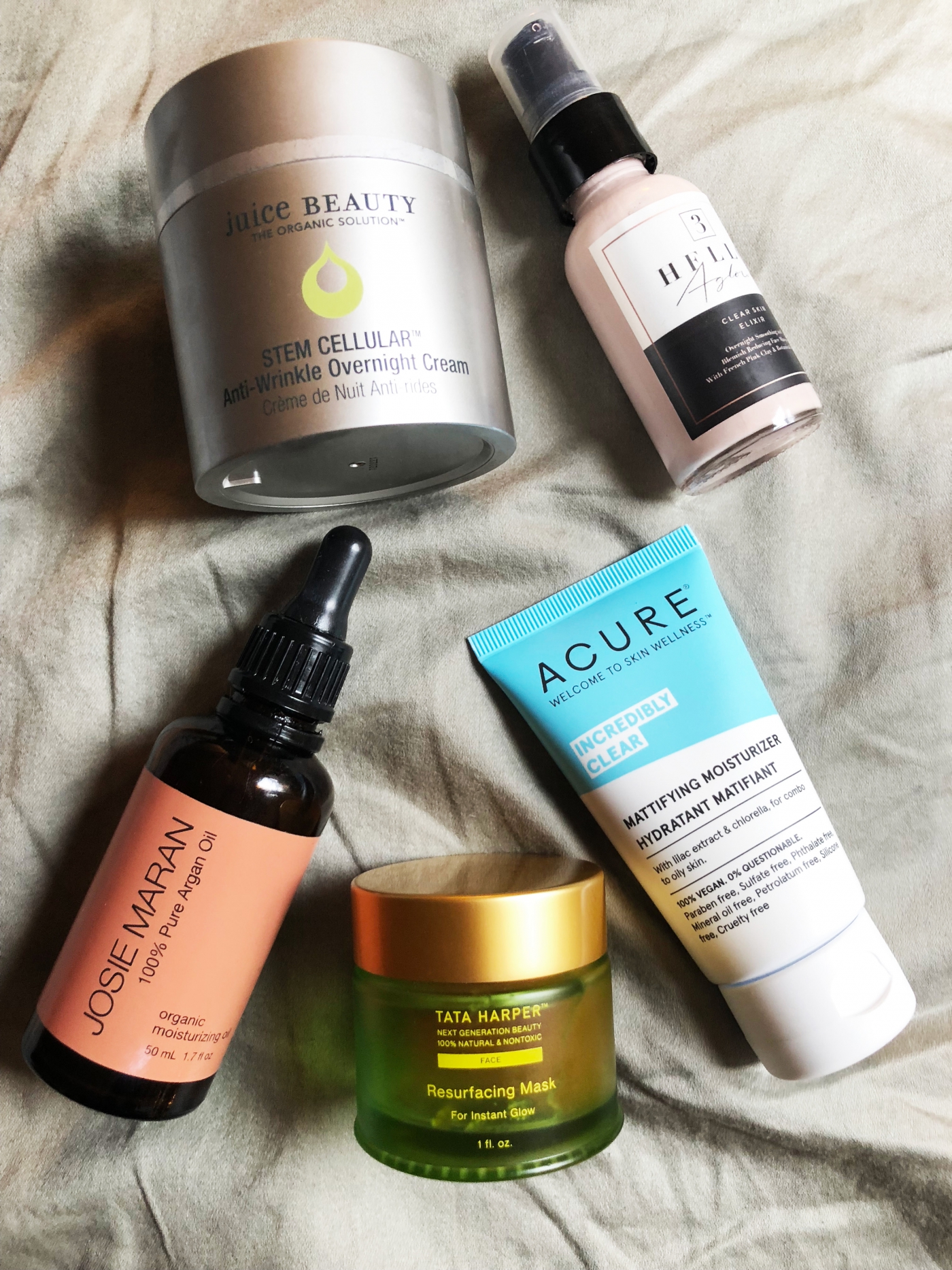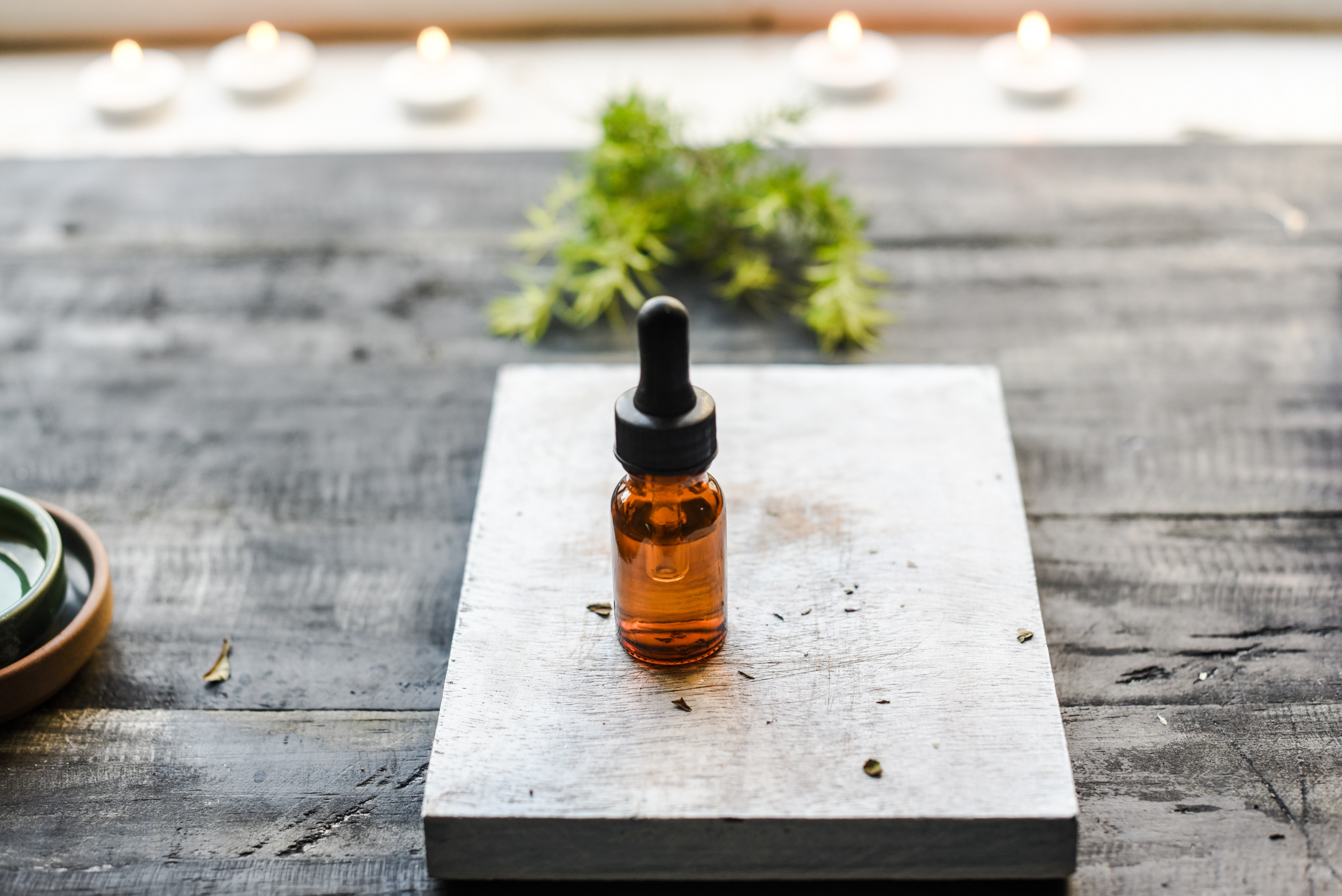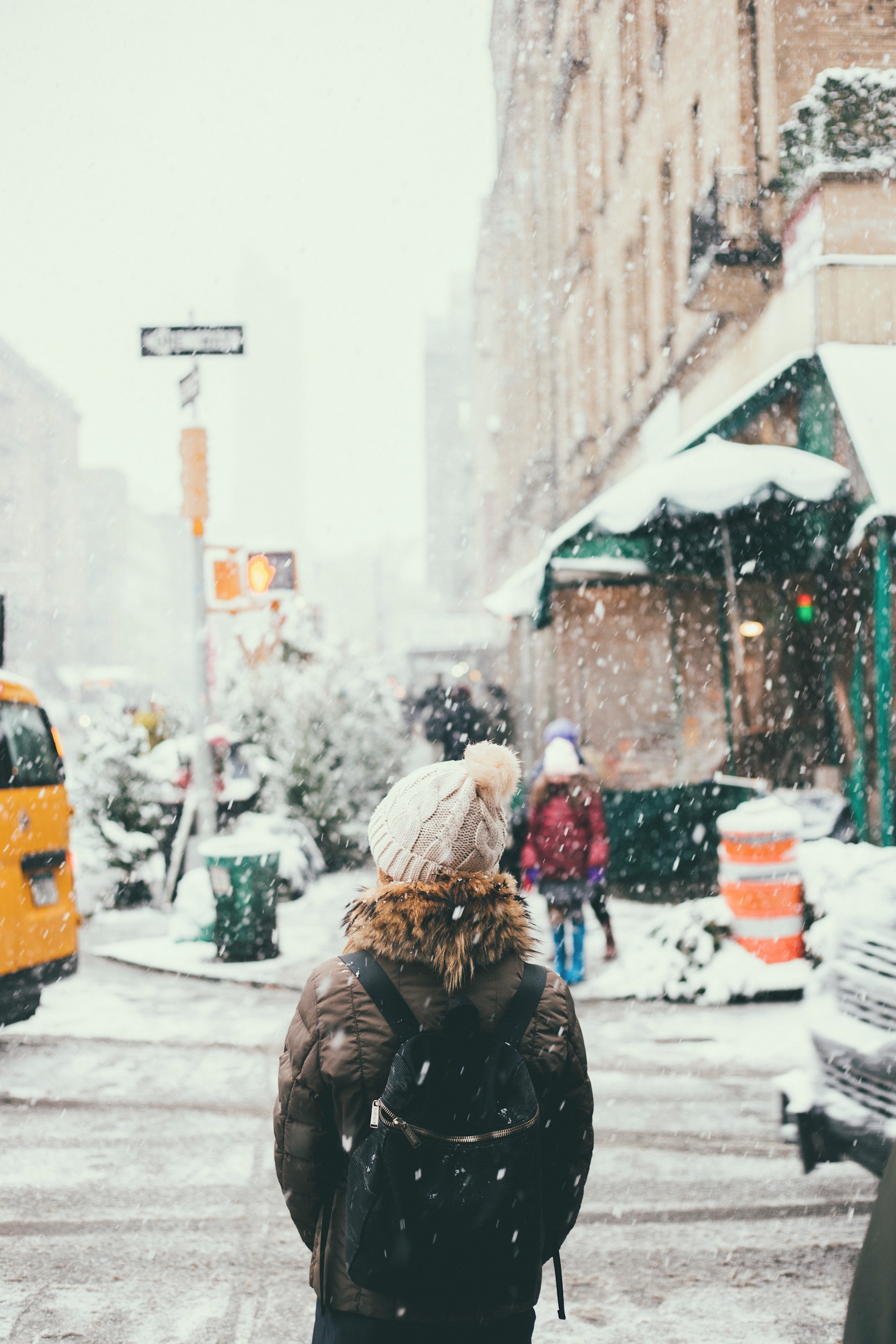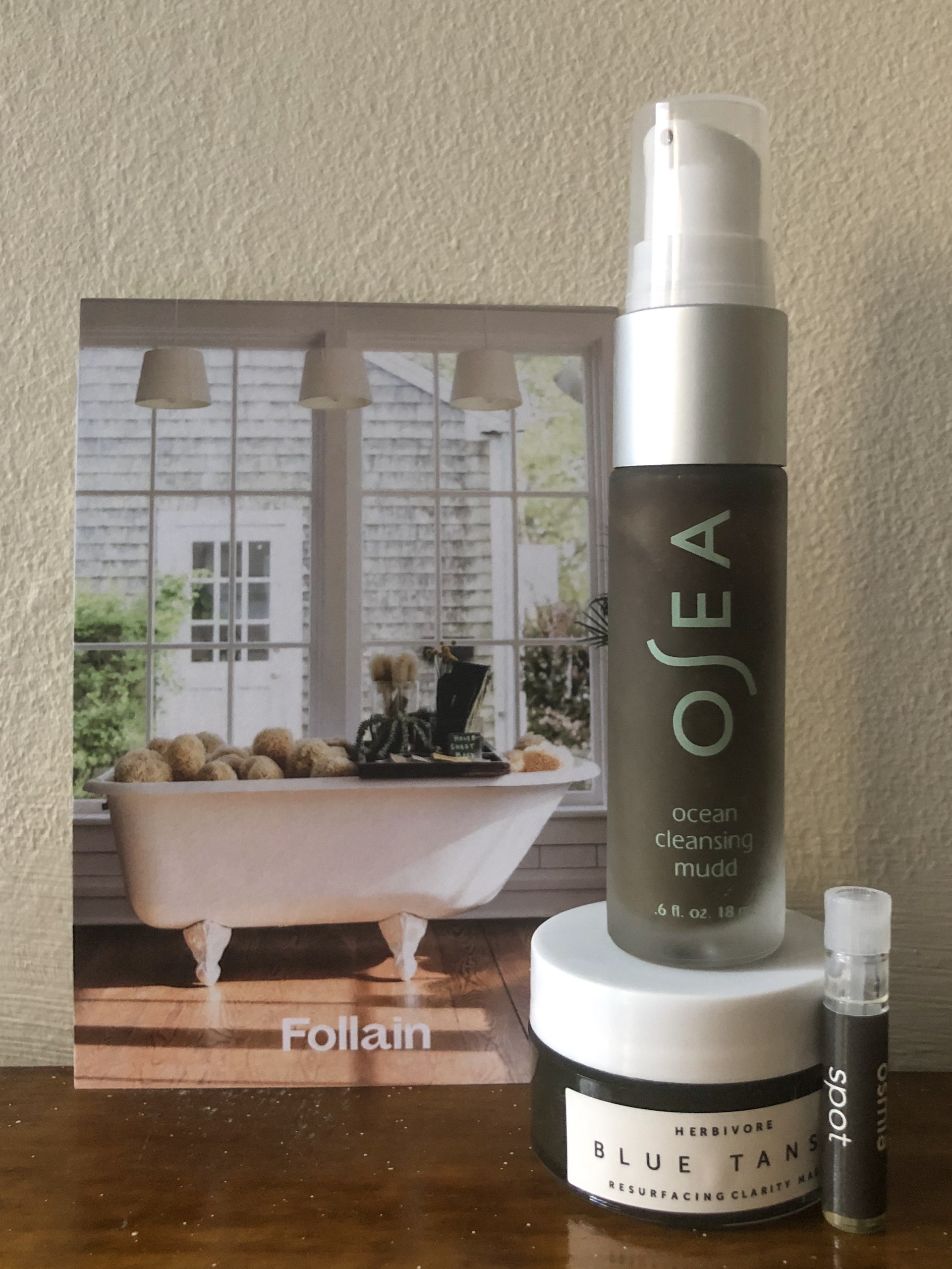
I was being lied to. I didn’t know it until I started working at a major beauty company back in 2013. A coworker clued me in to the fact that most beauty companies are using products that have tons of harmful chemicals in them, they don’t have to clear any new products through the FDA, and using these products over time can lead to serious health complications. The traditional beauty industry preys upon consumers with confusing marketing messages to continue selling products with cheap ingredients at a premium. Yikes.
Once I learned the truth, I took a hard look at my beauty cabinet and ditched all the products with suspect ingredients. I’ve been using clean beauty products for five years and I’ve learned A TON about what to use and what to avoid. I’m going to save you all a lot of time and break down the 9 toxic chemicals you need to avoid starting now. I’m serious. Go in your bathroom, look at the product labels, and I’d highly recommend tossing anything that has these ingredients immediately.
1. Parabens
What they are: Parabens are synthetic preservatives.
What they do: Parabens prevent the growth of mold, bacteria, and yeast in beauty products.
Why they’re unsafe: Parabens disrupt hormone function. They mimic estrogen hormones and are connected to increased risk of breast cancer, as well as reproductive toxicity. The European Union banned parabens in 2012.
What you’ll see on product labels: Methylparaben, Propylparaben, Ethylparaben, Butylparaben, Isobutylparaben, Isopropylparaben, Benzylparaben, Phenylparaben (basically any chemical that ends in paraben)
What they’re found in: facial cleansers, body lotion, body wash, moisturizers, deodorant, shampoo, conditioner
2. Phthalates
What they are: Phthalates are a group of synthetic chemicals that are plasticizers or sometimes used as solvents.
What they do: Phthalates are used to soften plastics or are used as dissolving agents, stabilizers, emulsifying agents, and suspending agents in beauty products.
Why they’re unsafe: Phthalates are endocrine disruptors that have been linked to cancer and birth defects in some studies. Four types of phthalates are in the process of being banned by the European Union.
What you’ll see on product labels: Di (2-ethylhexyl) phthalate (DEHP), diisodecyl phthalate (DIDP), diisononyl phthalate (DINP), butylbenzyl phthalate (BBP), dibutyl phthalate (DBP), diisobutyl phthalate (DIBP), Di-n-octylphthalate (DNOP), diethyl phthalate (DEP)
What they’re found in: beauty products, detergents, plastic toys, food packaging, PVC plastics
3. BHT/BHA
What they are: BHT and BHA are synthetic preservatives.
What they do: BHT and BHA prevent oils from oxidizing and going rancid.
Why they’re unsafe: Some studies have linked BHT and BHA to asthma, cancer, and behavioral issues in children.
What you’ll see on product labels: Butylated hydroxytoluene (BHT), butylated hydroxyanisole (BHA)
What they’re found in: cosmetics & beauty products, food packaging, plastics, rubber products, fragrance
4. Fragrance
What they are: Fragrance is composed of synthetic chemicals if not labeled “natural”. Often a catchall phrase on consumer products containing hundreds of “secret” ingredients.
What they do: Fragrance is used to used to add scent to beauty, household, and other consumer products.
Why they’re unsafe: Components of fragrance have been linked to hormone disruption and allergic reactions. Companies don’t need to disclose what the components of fragrance actually are; they are considered “trade secrets” and thus the consumer doesn’t actually have insight to what they’re buying.
What you’ll see on product labels: fragrance, aroma, parfum (but synthetic fragrance most often contains chemicals like phthalates, BHT, parabens and more)
What they’re found in: perfumes, lotions, cleansers, cleaning products, detergents, deodorants — basically most products with a scent that aren’t labeled as being from a natural source
5. SLS/SLES
What they are: Sodium lauryl sulfates (SLS) and Sodium Laureth Sulfates (SLES) are surfactants.
What they do: SLS and SLES make cleaning and beauty products foam and lather, and help aid in the elimination of dirt and oil
Why they’re unsafe: Both these ingredients have been known to be skin irritants, although SLES are thought to be the milder between the two. They’re also a byproduct of petroleum. While these ingredients themselves are not carcinogenic some of the ingredients to make them are. SLES is made when Ethylene Oxide is added to the SLS chemical mixture, and thus 1,4 Dioxane is produced as a byproduct. Both Ethylene Oxide and Dioxane have been banned by the European Union except in cases when the chemical compounds are used to transform SLS into SLES.
What you’ll see on product labels: sodium lauryl sulfate (SLS), sodium laureth sulfate (SLES), sodium dodecyl sulfate
What they’re found in: shampoos, soaps, detergents, dish soaps, facial cleansers — pretty much anything that foams
6. PEGs
What they are: Polyethylene glycols (PEGs) are petrolum-based mixtures of compounds. They are commonly followed by a number, which dictates how much ethylene glycol it contains (ethylene glycol is a viscous dihydroxy alcohol).
What they do: PEGs can be used as emulsifiers (help water and oil-based products mix together), emollients (soften and lubricate the skin) or as a way to help other products penetrate your skin.
Why they’re unsafe: PEGs are really good at penetrating your skin, so while some studies say that PEGs themselves are safe, they could allow for other toxic ingredients in your products to get into your system more easily. PEGs are also considered irritants, and could potentially include 1,4 Dioxane as a byproduct during manufacturing, which is a known carcinogen.
What you’ll see on product labels: Polyethylene glycol, the letters PEG followed by a number (ex: PEG-4, PEG-100, PEG-7, etc.)
What they’re found in: moisturizers, makeup, conditioner, hair dyes
7. Formaldehyde
What it is: Formaldehyde is a synthetic preservative.
What it does: Formaldehyde prevents products from spoiling.
Why it’s unsafe: Formaldehyde is known human carcinogen. EWG gives this a 10 on a scale of 1-10 with 10 being the most toxic.
What you’ll see on product labels: formalin, formic aldehyde, merthaldehyde, methanal, methyl aldeyde, oxomethane, oxymethylene, bfv, DMDM hydantoin, imidazolidinyl urea, diazolidinyl urea, quaternium-15, bronopol (2-bromo-2-nitropropane-1,3-diol ), 5-bromo-5-nitro-1,3-dioxane, hydroxymethylglycinate
What they’re found in: nail polishes, nail polish removers, hair dyes, facial & body products
8. Chemical Sunscreens
What they are: Various chemicals in sunscreen compounds filter against UVA or UVB rays.
What they do: Chemical sunscreens help protect against UVA/UVB rays from the sun by absorbing the light directly. (Mineral sunscreens block the rays instead of absorbing them).
Why they’re unsafe: Certain chemicals found in sunscreens have been associated with hormone disruption and skin allergies. Mineral sunscreens that contain zinc oxide are great alternatives!
What you’ll see on product labels: oxybenzone, octinoxate, homosalate, octisalate, octocrylene, avobenzone, homosalate
What they’re found in: face & body sunscreens, foundation or concealers with sunscreen, chapsticks with sunscreen
9. Lead
What it is: Lead is a heavy metal.
What it does: Lead can add pigment or can be used to stabilize plastic.
Why it is unsafe: Lead is a neurotoxin; with prolonged exposure it could lead to behavioral, reproductive, or hormonal problems. The FDA wrote new guidelines for the maximum amount of lead present in beauty products (but to my understanding this has not gone into law)–but I would rather have no lead at all!
What you’ll see on product labels: that’s the scary part, it’s not on product labels!
What they’re found in: lipsticks, eyeliners, hair dyes,
Another resource I use often is from Environmental Working Group called Skin Deep. You can go to this page, enter in ingredients or products, and see what they rate it on a scale from 1 to 10 in terms of toxicity. They also have an app for questions when you’re out shopping or need an answer on the go, as well as lists of products they deem safe. I love this company and 100% trust their research.
Disclaimer: I am not a medical professional and I am simply sharing what I have learned about chemicals in beauty products over the last few years! I’m a huge proponent of science and will continue to spread real, fact-based information here and do so in a well-researched capacity. Content here is not intended to be a substitute for professional medical advice, diagnosis, or treatment.




Just went through a few beauty products and was beyond shocked. Thanks for the knowledge!